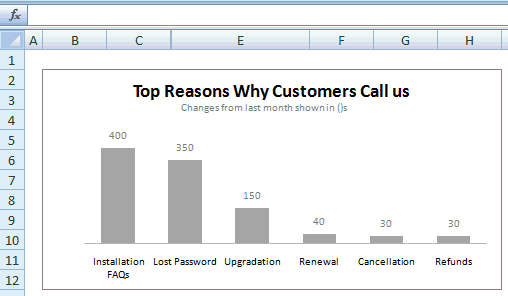
I like to use a simple shading schema to clearly denote which cells will get updated with data and which ones never really need to be touched. Let’s leave the first row alone - this is where we will populate the “current value,” which we’ll get to later. For the purposes of this example, we’ll go with months. On that worksheet, we’ll use the first column to list our dates - these could be days, weeks, months, whatever (they can be changed at any time and the whole approach still works). This is a slightly iterative process that starts with the setup of the Data tab. This basic approach is one of the core components in the dashboards I work on every day, and it can be applied to a much more robust visualization of data than is represented here. ( Note: I abhor many, many things about Excel’s default settings, but, to keep the example as familiar as possible, I’m going to leave those alone. I like to just have the first worksheet as the presentation layer - let’s name it Dashboard - and the second worksheets as the data layer - let’s call that Data. One key here is to separate the presentation layer from the data layer. The example shown here is pretty basic, but the approach scales really well.
EXCEL 2011 FOR MAC VALUE FROM CELLS DATA LABELS UPDATE

The single post on this blog that has, for several years now, consistently driven the most traffic to this site, is this one that I wrote almost three years ago. Originally written by Analytics Demystified on June 8, 2013


 0 kommentar(er)
0 kommentar(er)
